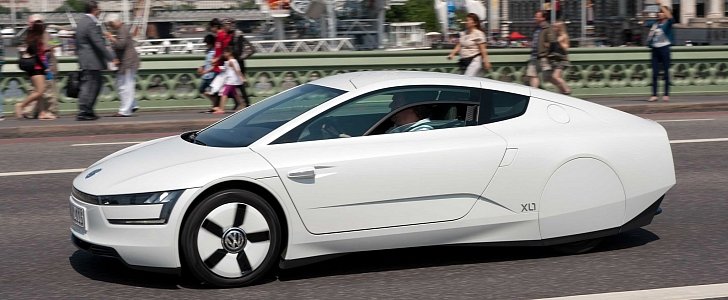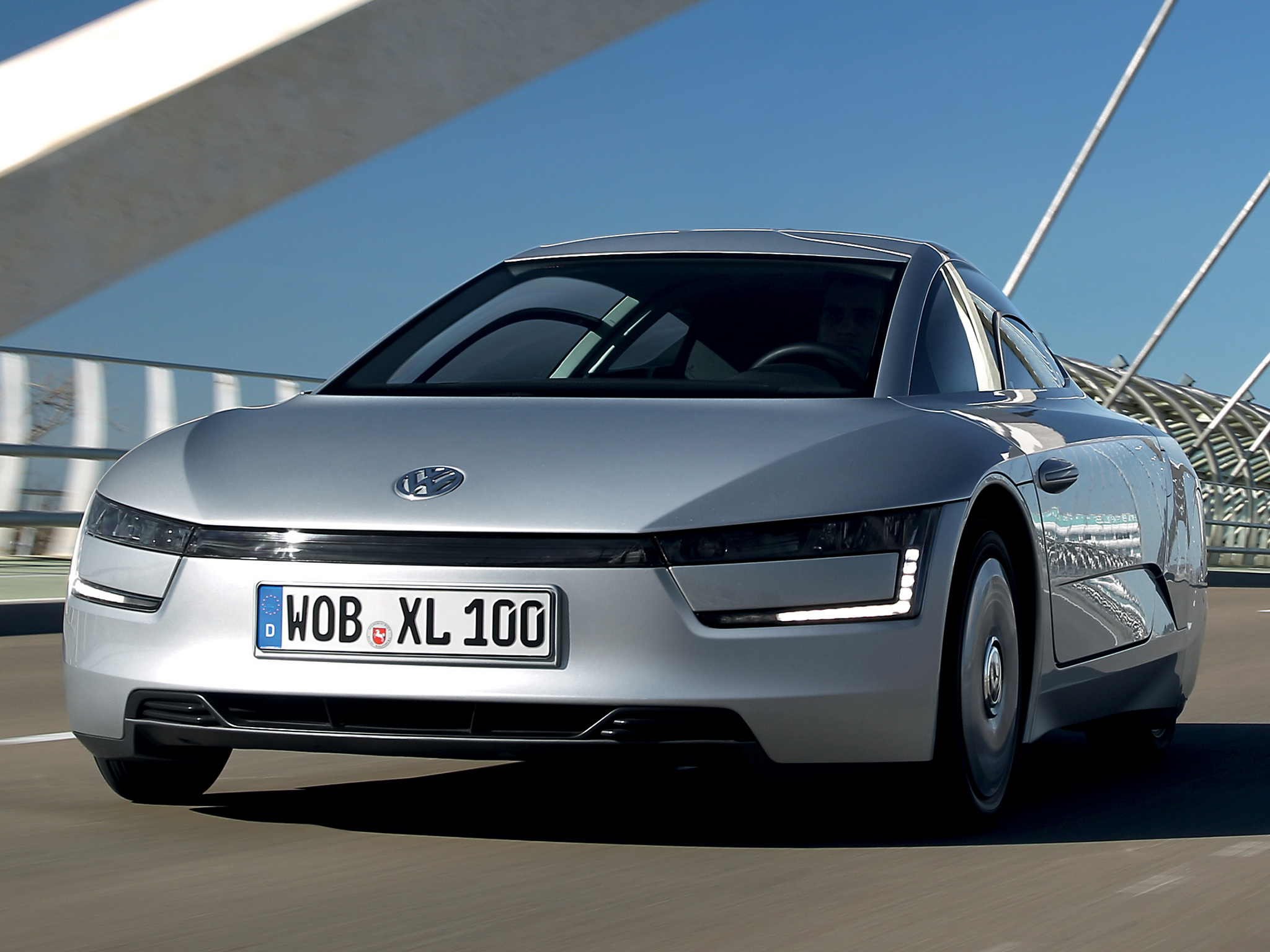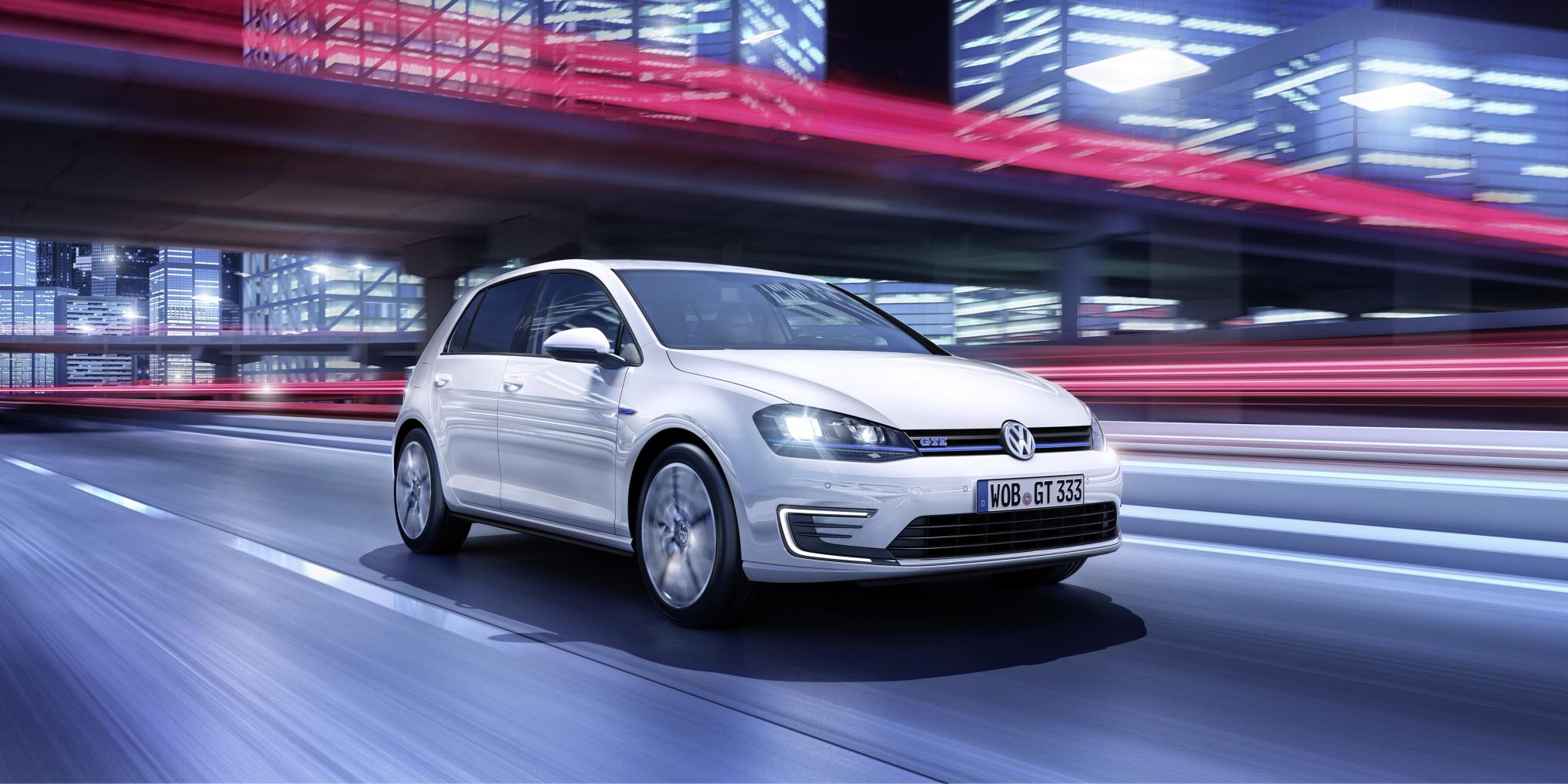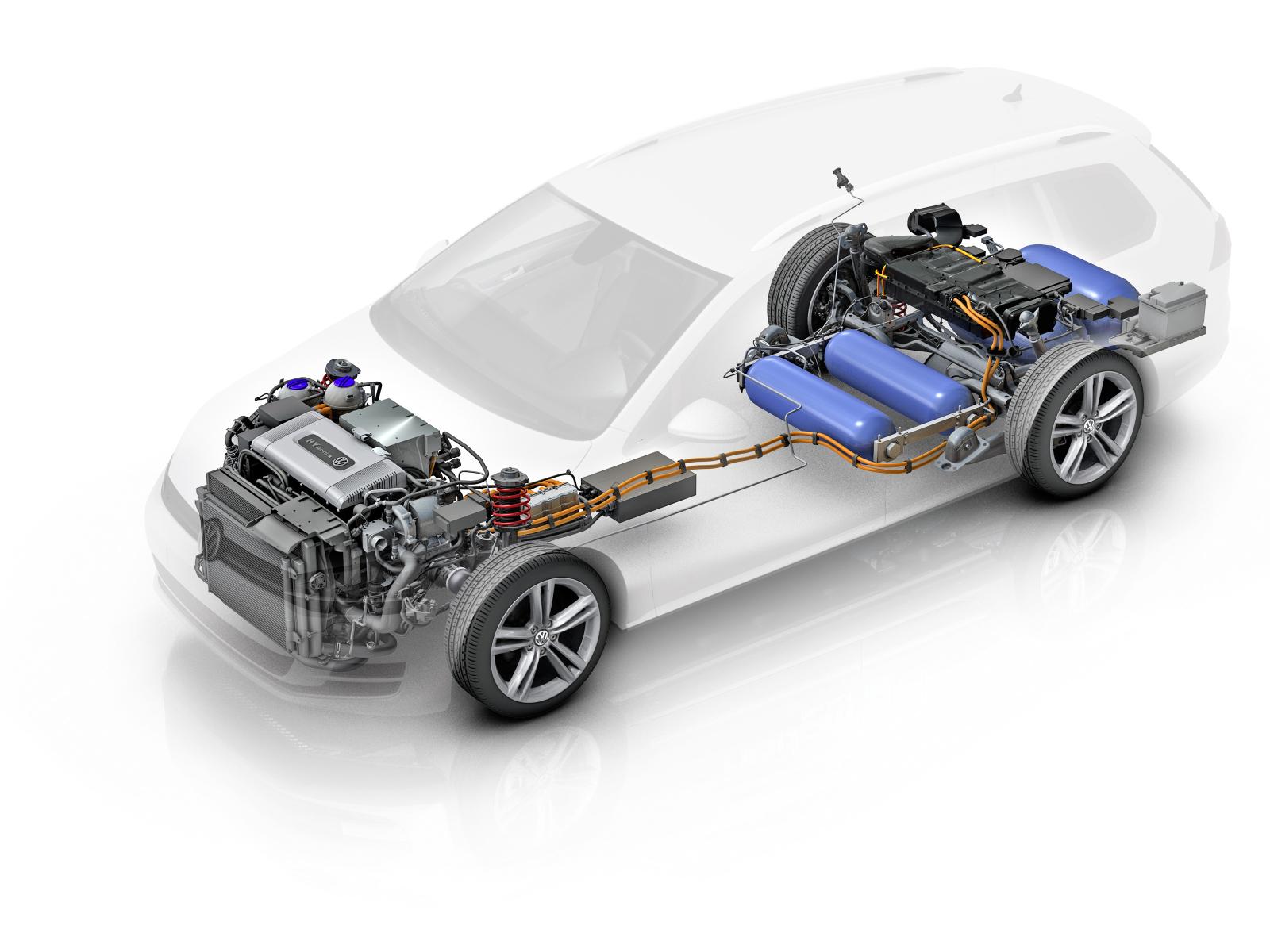Nobody knows what will happen in the future. Maybe mankind is headed towards all-out war or maybe we will find a way to put aside our differences, protect the environment, end hunger and disease. From where I'm standing, that looks extremely unlikely, but I can say with absolute certainty that electric cars are here to stay.
In the 2000s, we laughed at the idea that electricity would one day replace gas. But after the financial crisis struck, we were given a terrible fright when crude went over 150 dollars a barrel.
It was at that point we began to realize electricity was going to change everything, and it was up to the engineers to decide if that was for the better or worse. I think comedian and car enthusiast Jay Leno said it best: electricity will be for internal combustion engine what the car was for the horse. We'll use V8 muscle cars purely to have fun on the weekend.
Toyota is seen by everybody as the car company that will bridge the distance between the future and the present. However, many studies have found Prius owners want to buy something else. The Japanese automaker also doesn't have as many innovative eco-vehicles as the next company we're going to talk about.
Volkswagen is the car world's equivalent of Goliath. The Germans own several brands and have factories all over the world. By the end of this decade, they could be the leaders of this four-wheeled business and their CEO is already preparing for the day when EVs will matter.
Before I tell you all the ways in which I think VW will shape the future of electric mobility, let's talk about gasoline. This fuel is distilled from a liquid we pump from deep underground that in turn was created over millions of years from the fossilized remains of living creatures.
Sounds extremely complicated. So why do we like it then? It's because gas is very cheap and energy-dense. I recently had the pleasure of driving the Renault Zoe electric car and was shocked when I realized that the contents of the 290 kilograms (640 lbs) battery only lasted me about 100 kilometers. For the same journey, about 7 liters of fuel would have been enough.
The folks in charge over at the Wolfsburg citadel probably know the technology isn't ready. However, that doesn't stop them from trying to figure how we will use EVs ten or twenty years from now. It's a bit like a billion dollar jigsaw puzzle that needs to be completed without having all the parts.
This technological marvel weighs a mere 1,753 lbs, nearly 700 lbs less than a 2014 Mazda MX-5, and is made entirely from carbon fiber. As ridiculous as the official claim (1l/100km or 261 mpg US) was, some tests got even better than that.
Volkswagen first toyed with the idea of extreme fuel efficiency over a decade ago when they built the L1 prototype. This is an evolution of that, offering a slightly more practical seating arrangement. Along with weight reduction, the XL1 achieves its numbers via extremely low drag The car has no side mirrors, which have been replaced with rear-facing cameras while the underbody is completely flat.
The part burning the fuel is a two-cylinder turbodiesel engine, essentially half the 1.6 TDI that many Golfs use. It's connected to a battery and plug-in battery of only 5.5 kWh. That's less than a quarter of what I hand in the Renault Zoe.
Because Volkswagen wanted to sell the car to customers for around €100,000, the interior was made to feel familiar. A 7-speed DSG gearbox and a steering wheel from the Golf took care of that. 250 have supposedly been made, all with butterfly doors, visible carbon fiber and seating for two.
The Germans probably lost a lot of money on this project and got nothing in return. But they showed the world it was possible to build a 1-liter car.
After the XL1 had come out, VW named 2013 the "year of the electric mobility. 0% Emissions. 100% Emotions."
I'm not sure it's the first such modular architecture, but even to this day, it's the most technologically advanced. From day one, we were told the platform will take every kind of powertrain imaginable: petrol, diesel, ethanol, hybrid and electric.
In early 2014, they added the emotion to the 0% emissions by finally launching the Golf GTE. It's a plug-in hybrid, which is not a new idea. However, when Volkswagen does it, a PHEV has significant implications. The GTE is not like a Toyota Prius because it's designed to be a member of the GTI family. With 204 PS, the car will accelerate from 0 to 100 km/h in under 8 seconds.
Somebody working at a car company I won't mention told me "when VW shows a new door handle, it's more important than our whole car." The GTE is like that too because it has tartan seats, a sporty leather steering wheel, and many premium touches to justify its €40,000.
Both Audi and Volkswagen (and Porsche) have many plug-in cars on sale already and have technically left GM and Toyota behind.
Many companies and even a university are collaborating with VW on the V-Charge project. As you can see in the video below, we are dealing with the e-Golf, an all-electric version of the popular hatchback. The idea is that a car can now go into a parking lot entirely automatically. So basically, you can do your shopping, watch a movie or even take the airplane and leave while it charges up.
Using sensors that are already in the car, the e-Golf finds a suitable parking spot, preferably one with a nice induction pad to fill up its battery. After that is done, it vacates it so that other EVs can recharge. A 3D model of the garage is stored and used to determine how and where the autonomous driving should take place. This method is preferable because getting a GPS signal underground is not possible.
The problem with charging cables is that the faster the process gets, the thicker these cables need to be to withstand the load. So instead of giving you a hernia, Volkswagen wants robots that can plug and unplug the GTE or e-Golf from the circuit.
In late 2014, Volkswagen showed the Golf HyMotion concept at the Los Angeles Auto Show. From the outside, it looks 99% normal, but the underpinnings highlight a commitment to saving the environment.
Just like electric cars, hydrogen-powered ones use electricity to move. The difference is where that power comes from: a fuel cell that turns the reaction between hydrogen and oxygen into a steady stream of electrons.
Audi had one too, based on the A7 luxury four-door coupe. The Germans say that the technology is ready for production, but the market and the infrastructure isn't there, so there will wait a few more years.
So there you have it, folks! It all seems a little crazy right now, but in 5 or 10 years when we seriously start using electricity, all this technology will begin to make sense.
It was at that point we began to realize electricity was going to change everything, and it was up to the engineers to decide if that was for the better or worse. I think comedian and car enthusiast Jay Leno said it best: electricity will be for internal combustion engine what the car was for the horse. We'll use V8 muscle cars purely to have fun on the weekend.
Toyota is seen by everybody as the car company that will bridge the distance between the future and the present. However, many studies have found Prius owners want to buy something else. The Japanese automaker also doesn't have as many innovative eco-vehicles as the next company we're going to talk about.
Volkswagen is the car world's equivalent of Goliath. The Germans own several brands and have factories all over the world. By the end of this decade, they could be the leaders of this four-wheeled business and their CEO is already preparing for the day when EVs will matter.
Before I tell you all the ways in which I think VW will shape the future of electric mobility, let's talk about gasoline. This fuel is distilled from a liquid we pump from deep underground that in turn was created over millions of years from the fossilized remains of living creatures.
Sounds extremely complicated. So why do we like it then? It's because gas is very cheap and energy-dense. I recently had the pleasure of driving the Renault Zoe electric car and was shocked when I realized that the contents of the 290 kilograms (640 lbs) battery only lasted me about 100 kilometers. For the same journey, about 7 liters of fuel would have been enough.
The folks in charge over at the Wolfsburg citadel probably know the technology isn't ready. However, that doesn't stop them from trying to figure how we will use EVs ten or twenty years from now. It's a bit like a billion dollar jigsaw puzzle that needs to be completed without having all the parts.
XL1
The XL1 is arguably the car that put Volkswagen on the map as a green research company. After years of telling us how great their TDI BlueMotion technology was, they combined it with an electric motor in a futuristic shell.This technological marvel weighs a mere 1,753 lbs, nearly 700 lbs less than a 2014 Mazda MX-5, and is made entirely from carbon fiber. As ridiculous as the official claim (1l/100km or 261 mpg US) was, some tests got even better than that.
Volkswagen first toyed with the idea of extreme fuel efficiency over a decade ago when they built the L1 prototype. This is an evolution of that, offering a slightly more practical seating arrangement. Along with weight reduction, the XL1 achieves its numbers via extremely low drag The car has no side mirrors, which have been replaced with rear-facing cameras while the underbody is completely flat.
The part burning the fuel is a two-cylinder turbodiesel engine, essentially half the 1.6 TDI that many Golfs use. It's connected to a battery and plug-in battery of only 5.5 kWh. That's less than a quarter of what I hand in the Renault Zoe.
Because Volkswagen wanted to sell the car to customers for around €100,000, the interior was made to feel familiar. A 7-speed DSG gearbox and a steering wheel from the Golf took care of that. 250 have supposedly been made, all with butterfly doors, visible carbon fiber and seating for two.
The Germans probably lost a lot of money on this project and got nothing in return. But they showed the world it was possible to build a 1-liter car.
After the XL1 had come out, VW named 2013 the "year of the electric mobility. 0% Emissions. 100% Emotions."
GTE and e-tron
I never bought into the marketing bull, but I was paying attention to what the engineers were doing. Many companies have modular platforms right now: GM's D2XX, Peugeot's EMP2 or Renault-Nissan's CMF. However, this modularity trend seems to start with the MQB.I'm not sure it's the first such modular architecture, but even to this day, it's the most technologically advanced. From day one, we were told the platform will take every kind of powertrain imaginable: petrol, diesel, ethanol, hybrid and electric.
In early 2014, they added the emotion to the 0% emissions by finally launching the Golf GTE. It's a plug-in hybrid, which is not a new idea. However, when Volkswagen does it, a PHEV has significant implications. The GTE is not like a Toyota Prius because it's designed to be a member of the GTI family. With 204 PS, the car will accelerate from 0 to 100 km/h in under 8 seconds.
Somebody working at a car company I won't mention told me "when VW shows a new door handle, it's more important than our whole car." The GTE is like that too because it has tartan seats, a sporty leather steering wheel, and many premium touches to justify its €40,000.
Both Audi and Volkswagen (and Porsche) have many plug-in cars on sale already and have technically left GM and Toyota behind.
V-Charge and Robots
So until we have better batteries, we want our cars to have powerful turbo engines as well. But what can we do about charging?Many companies and even a university are collaborating with VW on the V-Charge project. As you can see in the video below, we are dealing with the e-Golf, an all-electric version of the popular hatchback. The idea is that a car can now go into a parking lot entirely automatically. So basically, you can do your shopping, watch a movie or even take the airplane and leave while it charges up.
Using sensors that are already in the car, the e-Golf finds a suitable parking spot, preferably one with a nice induction pad to fill up its battery. After that is done, it vacates it so that other EVs can recharge. A 3D model of the garage is stored and used to determine how and where the autonomous driving should take place. This method is preferable because getting a GPS signal underground is not possible.
The problem with charging cables is that the faster the process gets, the thicker these cables need to be to withstand the load. So instead of giving you a hernia, Volkswagen wants robots that can plug and unplug the GTE or e-Golf from the circuit.
Hydrogen cars
By now, news of Toyota's hydrogen production car has most likely reached your ears. Volkswagen and Audi have one too... sort of.In late 2014, Volkswagen showed the Golf HyMotion concept at the Los Angeles Auto Show. From the outside, it looks 99% normal, but the underpinnings highlight a commitment to saving the environment.
Just like electric cars, hydrogen-powered ones use electricity to move. The difference is where that power comes from: a fuel cell that turns the reaction between hydrogen and oxygen into a steady stream of electrons.
Audi had one too, based on the A7 luxury four-door coupe. The Germans say that the technology is ready for production, but the market and the infrastructure isn't there, so there will wait a few more years.
So there you have it, folks! It all seems a little crazy right now, but in 5 or 10 years when we seriously start using electricity, all this technology will begin to make sense.






